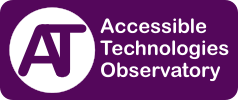Building construction -- Accessibility and usability of the built environment
ISO 21542:2011 specifies a range of requirements and recommendations for many of the elements of construction, assemblies, components and fittings which comprise the built environment. These requirements relate to the constructional aspects of access to buildings, to circulation within buildings, to egress from buildings in the normal course of events and evacuation in the event of an emergency. It also deals with aspects of accessibility management in buildings.
